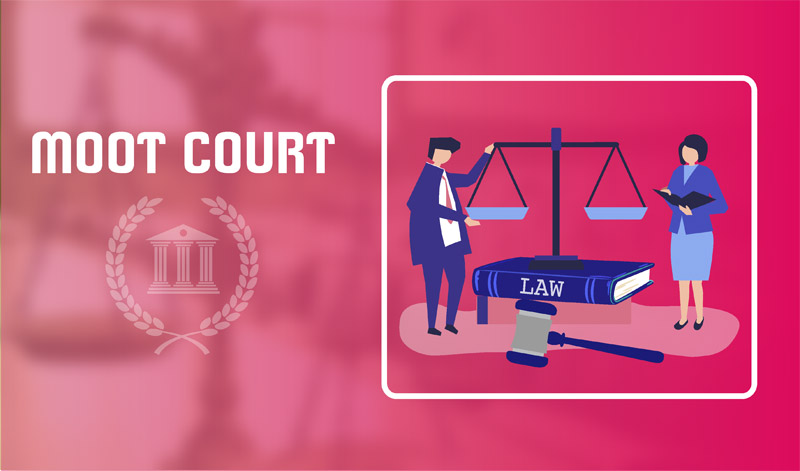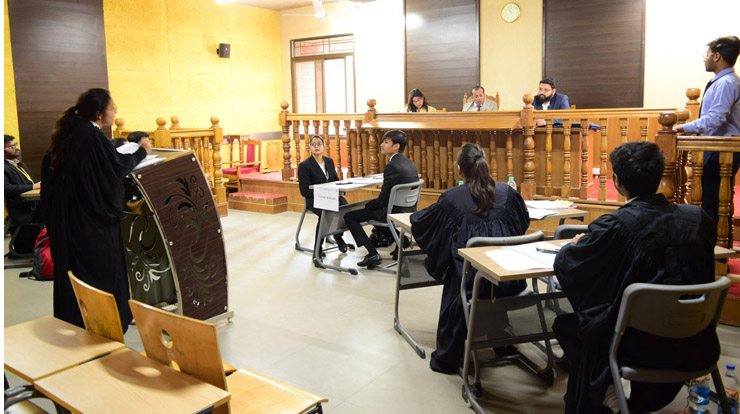
As BA LLB students at SMS Varanasi, you probably already know what moot courts are. But for those who are totally uninitiated, moot courts are simulated court proceedings where law students hone their advocacy skills by arguing hypothetical cases.
A moot court memorial is a pivotal element of this endeavour. This memorial is essentially a written submission that outlines the legal arguments and evidence supporting your case.
In this article, we will discuss how to write a moot court memorial and tips on how to make it stand out. We will also throw in some moot court success tips and insights that you will love. So, keep reading.
What is a Moot Court?

As stated above, a moot court serves as a platform for law students to apply their legal knowledge in a practical setting. Teams of students represent either the appellant or respondent and hone their research skills and legal writing skills while drafting moot court memorials.
They also present oral arguments before a panel of judges. This simulated court experience gives students a taste of what they will be doing as lawyers while developing their legal writing skills, critical thinking skills, oral advocacy skills, and teamwork skills.
Now, without much further ado, let us share some moot court success tips that can significantly boost your career prospects in the legal field.
The Anatomy of a Winning Moot Court Memorial
Crafting a persuasive moot court memorial requires meticulous attention to detail and a clear understanding of the case’s legal framework. Here’s a breakdown of the essential components:
- Cover Page: Includes the case name, team code, court name, index of authorities, and counsel information.
- Table of Contents: Provides a clear overview of the memorial’s structure.
- List of Abbreviations: Defines any abbreviations used in the memorial.
- Statement of Jurisdiction: Explains why the court has the authority to hear the case.
- Statement of Facts: Presents a concise and objective summary of relevant facts, citing the moot problem for each fact.
- Issues Presented: Clearly states the legal questions the court needs to decide, framing them favourably for your client.
- Summary of Arguments: Offers a brief overview of your main arguments and how they support your client’s position.
- Arguments Advanced: This section forms the heart of your memorial. It presents detailed legal arguments, divided into clear sections with headings. Each argument begins with a statement of the rule of law, followed by supporting case law, statutes, and secondary sources. Ensure your arguments are tailored to the specific facts of the case and address potential counterarguments.
- Prayer for Relief: Specifies the relief you seek from the court, such as reversal of a lower court’s decision, damages, or an injunction.
Research Skills: The Foundation of a Strong Memorial
Thorough research is the bedrock of any winning moot court memorial. Before delving into legal writing, ensure you have a comprehensive understanding of:
- The Facts: Scrutinise the moot problem to identify key legal issues and potential ambiguities.
- Applicable Law: Research relevant statutes, regulations, case law, and jurisprudence to build your legal arguments.
- Legal Commentary: Consult textbooks, treatises, and scholarly articles to deepen your understanding of the legal principles involved.
- Opposing Arguments: Anticipate the opposing team’s arguments and prepare counterarguments supported by evidence.
Legal Writing: Crafting a Persuasive Narrative

Effective legal writing is crucial for conveying your arguments convincingly. Employ clear, concise language, and avoid excessive legalese.
Organise your memorial logically, using headings, subheadings, and transitions to guide the reader.
Elements and Other Factors that Make a Moot Court Memorial Great
Crafting a winning moot court memorial requires more than just following a standard template. Here are some additional elements and factors that can elevate your memorial from good to great:
1. Compelling Narrative:
- Tell a Story: Weave a compelling narrative that connects the facts, law, and policy arguments in a way that is engaging and persuasive.
- Humanise Your Client: Make the judges care about your client’s situation by highlighting the real-world impact of the legal issues at stake.
- Appeal to Justice and Fairness: Frame your arguments in a way that resonates with the judges’ sense of justice and fairness.
2. Original and Creative Arguments:
- Think Outside the Box: Don’t just rehash the same old arguments. Look for novel legal theories or interpretations that can give you an edge.
- Challenge Assumptions: Don’t be afraid to challenge established legal principles or precedents if you believe they are outdated or incorrect.
- Offer Practical Solutions: Propose practical solutions to the legal problems presented in the moot problem.
3. Strong Research and Analysis:
- Go Beyond the Basics: Dig deep into the law and find obscure cases or statutes that can bolster your arguments.
- Analyse Precedents Critically: Don’t just blindly accept the holdings of previous cases. Analyse them critically and distinguish them from your case if necessary.
- Address Weaknesses in Your Case: Acknowledge any weaknesses in your client’s position and address them head-on. Don’t try to sweep them under the rug.
4. Meticulous Attention to Detail:
- Error-Free Writing: Proofread your memorial meticulously for any grammatical errors, typos, or inconsistencies.
- Consistent Formatting: Follow the prescribed formatting guidelines to the letter. A well-formatted memorial looks professional and is easier for the judges to read.
- Proper Citation: Cite all sources accurately and consistently, following the prescribed citation format.
5. Effective Use of Visual Aids:
- Tables and Charts: Use tables and charts to summarise complex legal principles or data in a visually appealing way.
- Diagrams and Illustrations: Use diagrams or illustrations to explain complex legal concepts or fact patterns.
- Photographs and Videos (if permitted): If the moot court rules allow, consider using photographs or videos to create a more compelling and persuasive presentation.
6. Teamwork and Collaboration:
- Divide and Conquer: Divide the research and writing tasks among team members based on their strengths and interests.
- Peer Review: Have your teammates review each other’s work for feedback and suggestions.
- Collective Brainstorming: Brainstorm together to generate creative arguments and solutions.
7. Passion and Enthusiasm:
- Believe in Your Case: Show the judges that you are passionate about your client’s cause and believe in the arguments you are making.
- Enthusiastic Presentation: Deliver your oral arguments with enthusiasm and conviction.
- Enjoy the Process: Moot court can be a challenging but rewarding experience. Have fun with it and learn as much as you can.
By incorporating these elements and factors into your moot court preparation, you can create a truly outstanding memorial that will impress the judges, showcase your legal skills, and pave the way for moot court success.
Advocacy Tips for Moot Court Success
Mastering the moot court memorial is just one part of the process. Here are additional tips for overall moot court success:
- Master the Facts: Know the case inside out. This will enable you to respond confidently to judges’ questions.
- Practice Oral Advocacy: Rehearse your arguments multiple times to ensure smooth delivery and confident presentation.
- Engage with the Bench: Address the judges directly, maintain eye contact, and answer their questions thoughtfully.
- Be Prepared for Anything: Moot court can be unpredictable. Anticipate challenges and adapt your arguments accordingly.
- Learn from Feedback: Actively seek feedback from judges and peers to improve your moot court memorials and oral advocacy skills.
By focusing on honing your research skills, legal writing, and advocacy abilities, you’ll be well on your way to crafting winning moot court memorials and achieving success in moot court competitions.
In conclusion, a moot court memorial is not just a document; it is a testament to your legal acumen, research skills, and dedication to the craft of legal writing. By mastering the art of creating a persuasive and comprehensive moot court memorial, you can significantly enhance your chances of moot court success and set a strong foundation for your future legal career.




